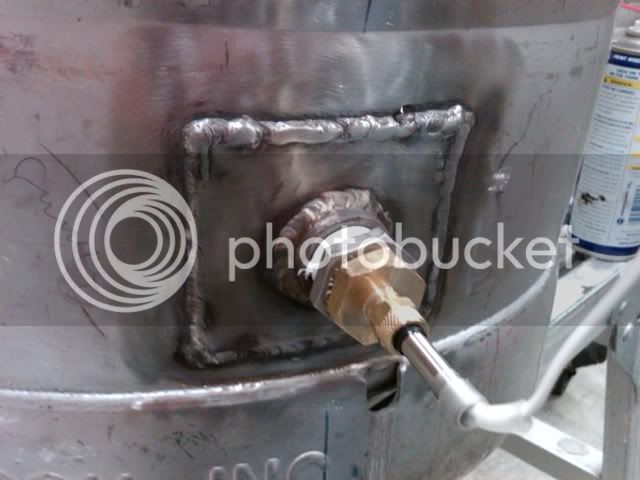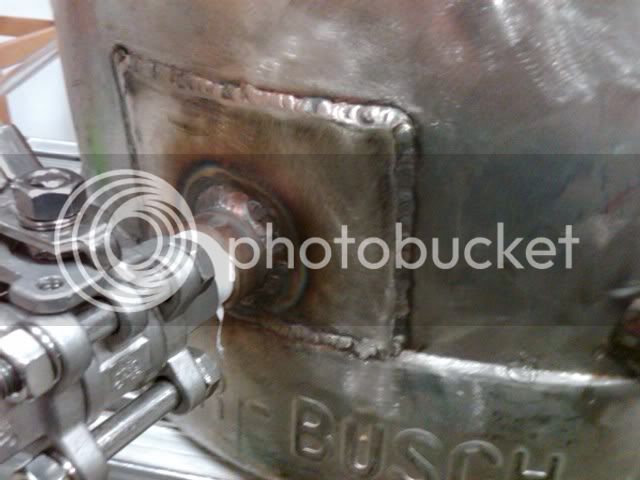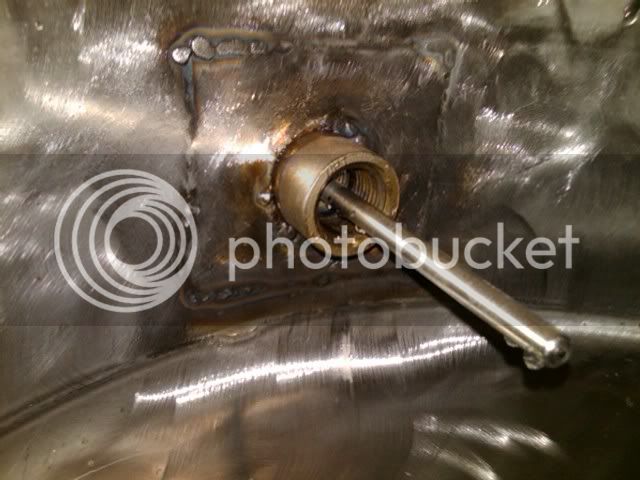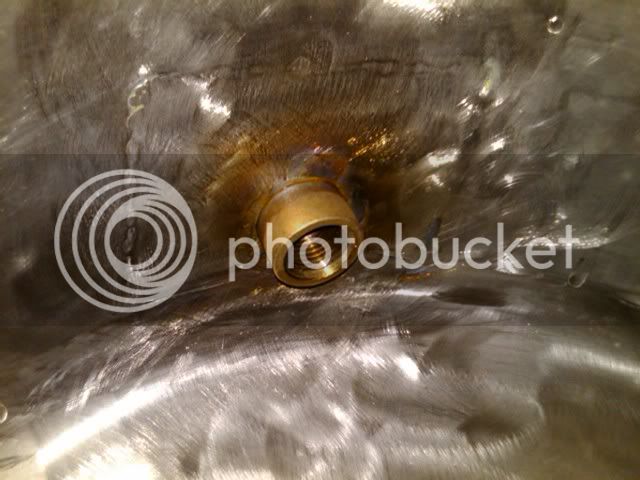GreenMonti
Well-Known Member
- Joined
- Nov 29, 2009
- Messages
- 1,268
- Reaction score
- 67
I was pretty disappointed too...
In one spot it looked like a hairline fracture across the weld. The other spot may have been the end of the weld, to be honest I didn't pay attention to the "weld puddles".
I took the keg back to the welder (I quit using the term Weldor in this case)on Tuesday and picked it up on Wednesday. He said he tried to weld over the problem area and the crack got even larger... said he had no idea what the problem was. So he heated the area all around the coupling (turned about a 3" diameter area blue) and was able to get it to weld.
I brought it home, re-assembled the fittings and filled it with water... darn if there aren't two new leaks!!! I let it sit with about 10 gallons of water and checked the other couplings. Found a leak in one other coupling as well. Keep in mind, these are tiny leaks... maybe 3 minutes for a drop to actually form. So, I disassembled it once again. I filled the other two kegs he welded just to double check... no leaks in them.
I took the keg back for a second time yesterday. I took two new couplings and told him maybe it was contamination that was causing the problem?? I told him it was his option if wanted to cut them out and start over.
I should have it back this afternoon. I'm pretty disappointed that at this point I have to have my fingers crossed and "hope" it doesn't leak. This time I will probably just tape and screw in some plugs to check for leaks instead of going through the hassle of installing and aligning the fittings.
Ed
Oh boy......
As others have mentioned, I believe the issue with the cracking is due to dirty weld area. The cracks need to be ground out to get all the crap out of there that the weld isn't liking. This could be from a few different things. Poor prep on the "welder's" end ie...dirty, oily, hands or gloves. It could have been from not keeping the filler rod in the gas zone. It could be from not enough gas coverage on the torch side. I don't think it is a filler issue, unless he just blatantly isn't using good filler.
I would use a nice and small carbide to grind the area out and clean the surface around the trouble area to tie into, then put the gas on the back side and fill just the little area up washing the puddle to the clean outer area. Tail off the heat so you don't leave a crater and it should be good.......I fear that the torch move might have done more harm then good. The more "hard" a material is, the more difficult it is to weld without cracking. The more heat, the more crap you put in, the harder this is going to be to fix. If you can tell him to grind out that area he will be a lot better off being able to fix it. I hope he didn't forget to use the back gas on these repairs he is doing?
I agree with the above statement on the fact that "HE" should be checking them for water tightness. It wasn't a secrete as to what you were going to use them for. I check all mine and I also make sure that a fitting can still be screwed in from either side of the coupler, just in case I need to run a tap through one. I have never had the need but....
I hope he gets it taken care of for you and you can be done with this. I also hope it doesn't come down to needing a patch to fix it.
Good Luck.
Edit: I know I sound like a "clean" freak sometimes in my posts in other threads about weld prep. But this is a good reason why. If you are diligent about your prep and can rule it out right off the bat "IF" the need should ever arise with one of your welds. Look at the last pic I posted of my weld. There is nothing in that weld. Nothing on the surface, no carbon streaks, no mill scale looking stuff.






